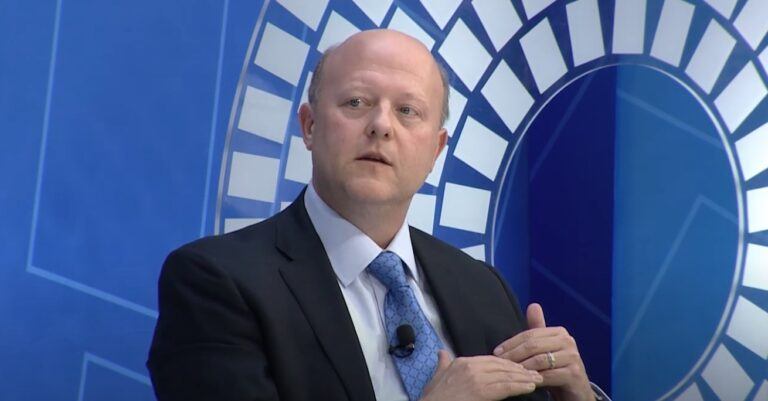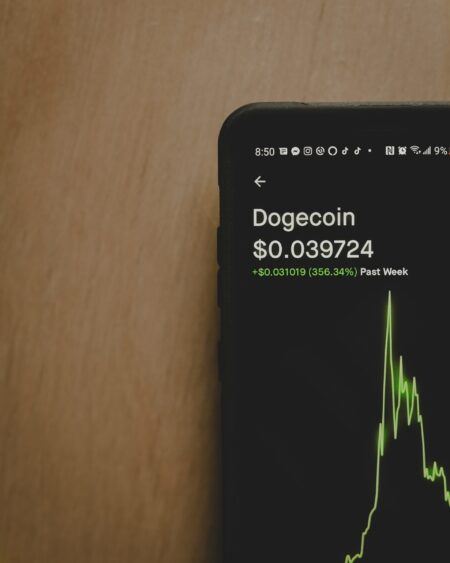On Sunday (July 3), Circle Internet Financial Limited Co-Founder, Chairman, and CEO Jeremy Allaire explained why holders of its fiat-collateralized and fiat-pegged stablecoin USD Coin (USDC) should not be worried (in the aftermath of the Terra ecosystem collapse).
As Circle’s Chief Financial Officer Jeremy Fox-Geen stated in a blog post (titled “USDC Trust and Transparency — Liquidity Matters”) published on June 13, “institutions that provide borrowing and lending services are inherently risky” since “they take credit risk (borrowers might not pay back loans), market risk (collateral securing a loan might fall in value), duration risk (the mismatch between longer-term loans and shorter-term deposits), among other risks.” Furthermore, they are “typically highly leveraged (fractionally reserved not fully reserved),” he said.
The Circle CFO went on to say that “these risks combine to create significant liquidity risk – the risk that the institution is unable to pay back its depositors upon demand and its debts when due,” which is why he believes that “robust regulation of financial institutions is a very good thing.” Fortunately, Circle is “a regulated financial institution, issuing USDC under US state money transmission laws, and is subject to the oversight of state banking supervisors, among others.”
He then went on to talk about USDC’s liquidity:
- “USDC is always redeemable 1 for 1 for US dollars. Any amount. Always. Period. We can make this assertion confidently because USDC is fully reserved with short-dated US Treasuries (~80%) and cash (~20%), denominated in US dollars, and held directly with leading US financial institutions and custodians within the US regulatory perimeter.“
- “The USDC reserve does not contain any other high risk, less liquid assets such as digital assets, private or public equity, loans secured or unsecured, commercial paper of any kind or credit rating, assets denominated in currencies other than US dollars, or assets held with third parties subject to lock-ups or other restrictions upon liquidity.“
Anyway, here is what the Circle CEO said on Twitter earlier today:
- “With so many firms facing fundamental challenges and risks, Circle has amped up our own information about Circle and USDC. Sharing it here so it’s fresh for people to review. We started publishing these in the days following the Terra collapse.“
- “It’s understandable why some users would be paranoid given the history of hucksters in crypto. We have always tried to hold ourselves to the highest standards afford to us. That’s enabled us to work with regulators, top-tier assurance firms, and leading FIs.“
- “There is also some obvious confusion between USDC reserves — which are regulated (where and what we can hold), examined (by regulators and assurance firms), and transparent (weekly flows and composition) — and USDC that itself is used in lending markets, away from Circle.“
- “On the last point re: Circle Yield, we will share a blog post this week, but the essence is that because Circle Yield is regulated, over-collateralized, offered as a security to only accredited investors, and has a very conservative UW approach, we have had zero issues.“
- “Circle is in the strongest position it has ever been in financially, and we will continue to increase our transparency. FWIW, we are also encouraged by emerging regulatory frameworks for stablecoin issuers, which should help further increase confidence in issuers like Circle.“
Brian Brooks, the CEO of Bitfury Group, which is Bitfury Group is a “leading full-service blockchain technology company”, talked about crypto on day two of the week-long 2022 Aspen Ideas Festival (AIF) being held in Aspen, Colorado.
Brooks’ comments were made on June 26 at an AIF panel, highlights of which were featured on CNBC’s “Crypto World” show.
With regard to stablecoins, he said:
“Stablecoins are actually the tip of the spear on crypto regulation, and it’s the one area where I think there is weirdly a really strong bipartisan consensus. I mean, there’s not a lot of that in the world today. So, man, bipartisan consensus on anything is a good thing…
“When I was the controller, I signed the first regulatory guidance that defined what a stablecoin was that would be allowed inside the US banking system. And what I said was that a stablecoin to be in the banking system has to have three features.
“First, it has to be backed by risk-free assets… It has to be backed by risk-free assets, meaning insured bank deposits and short-term treasuries and nothing else. Second, it had to be redeemable on demand and at par. So, if you meet those three conditions, in other words, if you really are a traveler’s check, except you’re operating under the internet, you’re a stablecoin...
“Why do you care though?… You should care because in the future stablecoins will become what people think of bank deposits today… These would be banking deposits that don’t have a minimum balance fee, don’t have a monthly maintenance fee, don’t have a transaction fee. That is why stablecoins are things that you will hear a lot about in the future even if you’re hearing about the first time today.“








